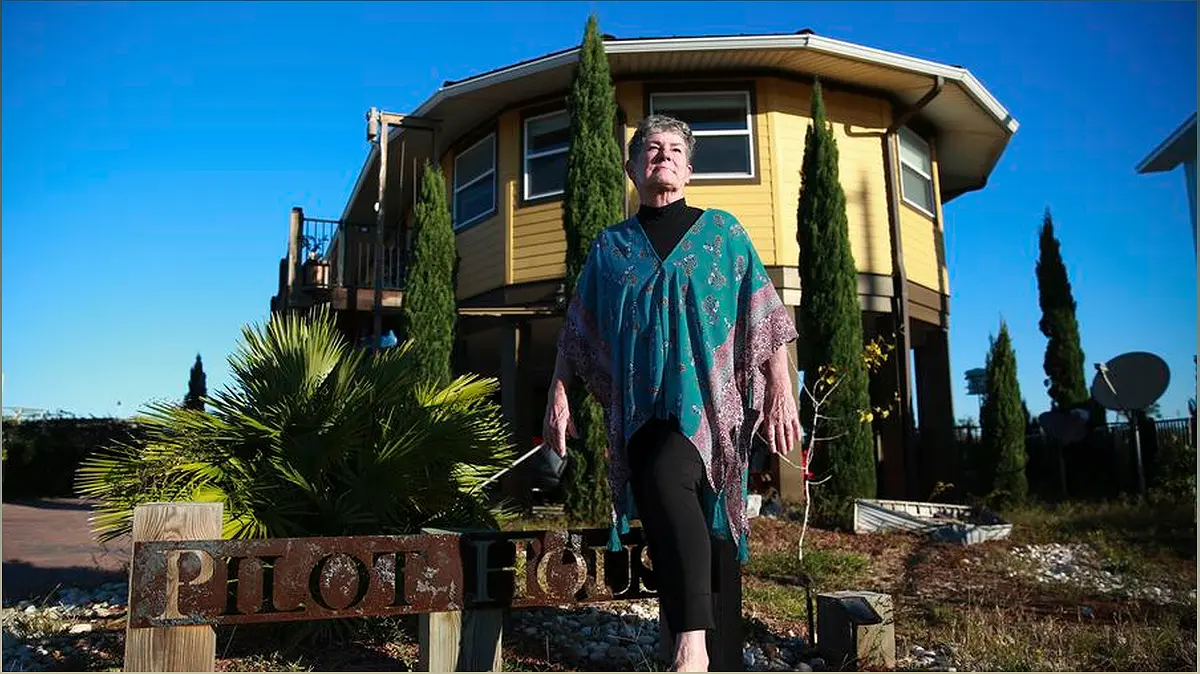When Hurricane Michael devastated the Florida Panhandle, Bonny Paulson's home stood strong amidst the wreckage, thanks to its resilient design. As extreme weather events increase with climate change, developers are prioritizing homes that are both environmentally friendly and built to withstand hurricanes. These homes incorporate features like solar panels, energy-efficient appliances, and advanced construction materials. By reducing carbon emissions and improving resilience, these homes offer a sustainable solution to combat climate change. Let's explore how these innovative homes are shaping the future of housing.
Resilient Homes: Weathering the Storm
Discover how resilient homes are designed to withstand extreme weather events.
Resilient homes are built with innovative construction techniques and materials that can withstand hurricane-force winds and other extreme weather conditions. These homes often feature reinforced foundations, impact-resistant windows, and sturdy roofs designed to resist high winds. By incorporating these resilient features, homeowners can find peace of mind knowing that their homes can weather the storm.
Furthermore, resilient homes are often elevated to reduce the risk of flooding. This not only protects the structure but also minimizes damage to personal belongings. With climate change leading to more frequent and intense storms, resilient homes provide a safe haven for homeowners during these challenging times.
Sustainable Living: Reducing Carbon Footprint
Explore how sustainable homes contribute to a greener future.
Sustainable homes go beyond resilience by incorporating eco-friendly features that reduce carbon emissions and promote energy efficiency. These homes often utilize solar panels to harness clean energy from the sun, reducing reliance on traditional power sources. Additionally, energy-efficient appliances and advanced insulation systems help minimize energy consumption.
By reducing their carbon footprint, homeowners of sustainable homes play a crucial role in combating climate change. These homes not only provide a comfortable living environment but also contribute to a greener and more sustainable future for all.
Innovative Construction Materials: Building for the Future
Learn how advanced construction materials are shaping the future of housing.
The use of advanced construction materials is revolutionizing the housing industry. These materials offer enhanced durability, energy efficiency, and reduced environmental impact. For example, recycled materials, such as reclaimed wood or recycled plastic, can be used in construction, reducing the need for new resources.
Furthermore, materials like insulated concrete forms (ICFs) provide superior insulation and strength compared to traditional materials. This not only improves energy efficiency but also enhances the resilience of the home. As technology continues to advance, the integration of innovative construction materials will shape the future of housing, creating sustainable and resilient homes.
Community Resilience: Neighborhoods Built to Last
Discover how entire communities are being designed to withstand climate change impacts.
Developers are taking a holistic approach by creating entire neighborhoods that prioritize resilience and sustainability. These communities incorporate features like elevated homes, flood mitigation systems, and green spaces that help absorb excess water and reduce the risk of flooding.
Additionally, some communities are embracing renewable energy sources, such as solar power, to provide clean and reliable energy to residents. By building resilient communities, developers are not only creating safe and sustainable living environments but also fostering a sense of unity and shared responsibility in the face of climate change.
Conclusion
Resilient and sustainable homes offer a promising solution to the challenges posed by climate change. These homes are designed to withstand extreme weather events while reducing carbon emissions and promoting energy efficiency. By incorporating innovative construction materials and techniques, developers are shaping the future of housing.
Communities built with resilience in mind provide safe havens for homeowners and foster a sense of unity in the face of climate challenges. As we continue to prioritize sustainability and resilience in our homes and neighborhoods, we contribute to a greener and more sustainable future for generations to come.
FQA
Are resilient homes more expensive to build?
While the initial cost of building a resilient home may be slightly higher, the long-term benefits outweigh the upfront investment. Resilient homes often have lower maintenance and insurance costs, and they provide greater peace of mind during extreme weather events.
Do sustainable homes require a significant lifestyle change?
Sustainable homes are designed to seamlessly integrate eco-friendly features without requiring significant lifestyle changes. Homeowners can enjoy the benefits of energy-efficient appliances, solar power, and advanced insulation systems while maintaining their desired lifestyle.
Can resilient and sustainable homes be built in any location?
Resilient and sustainable homes can be built in various locations, taking into account the specific climate and environmental conditions of the area. By adapting construction techniques and materials to local factors, homes can be designed to withstand the unique challenges of each region.

